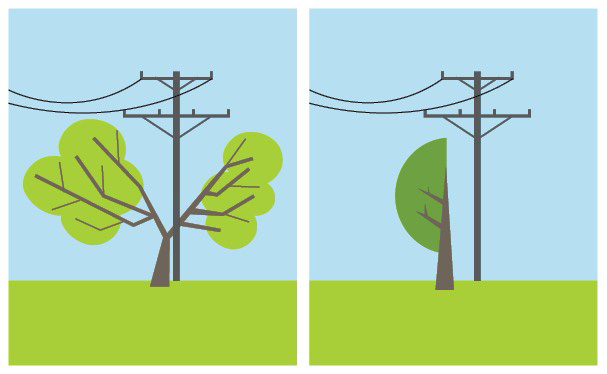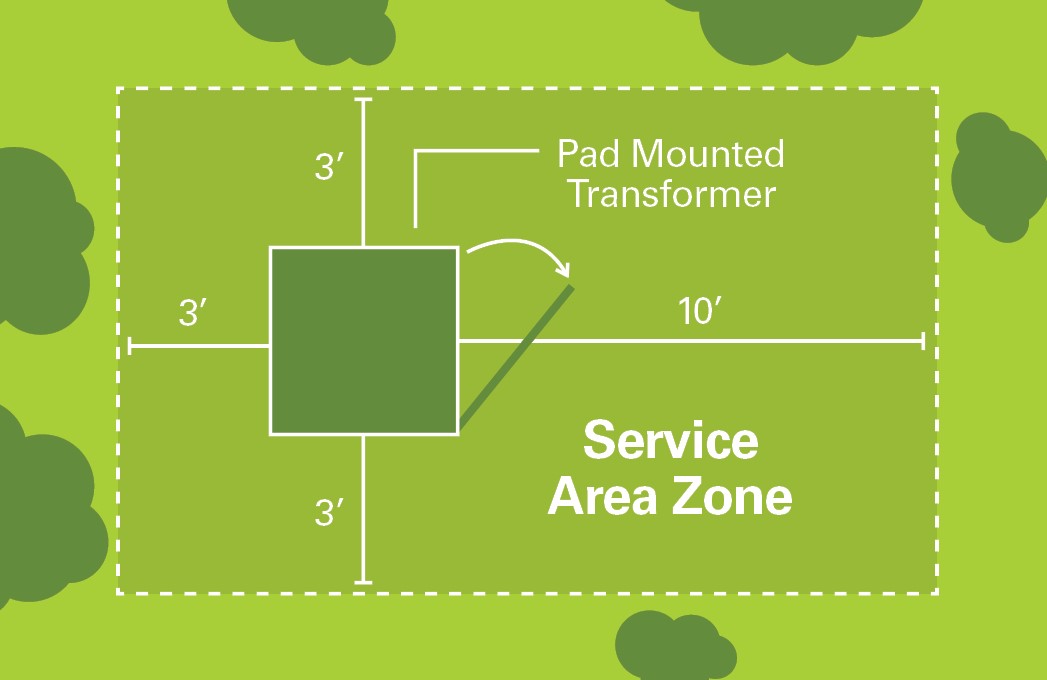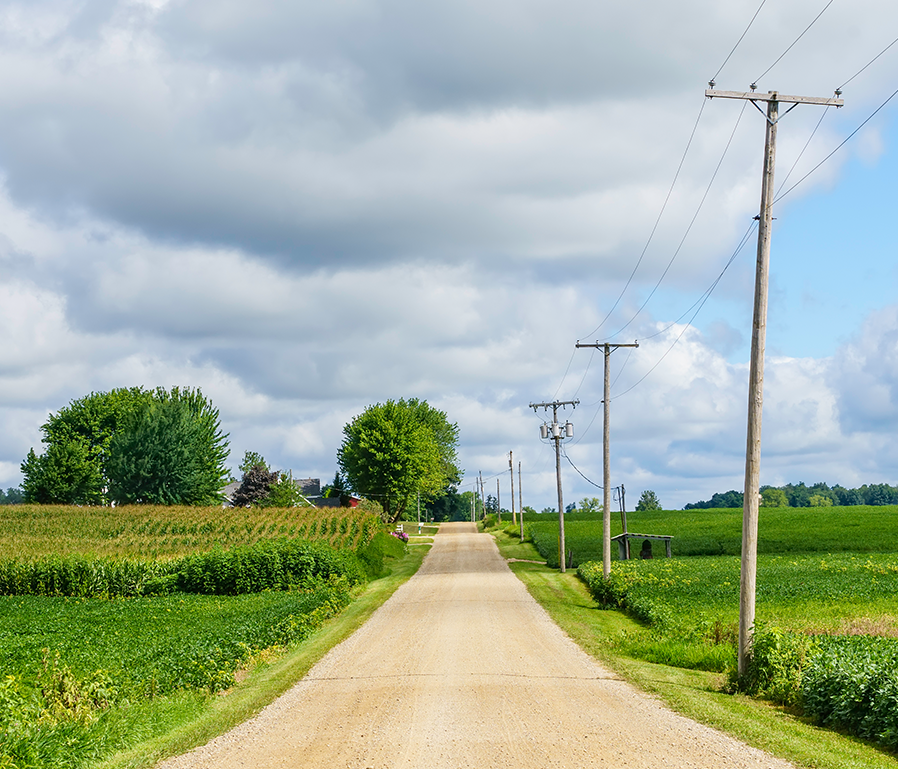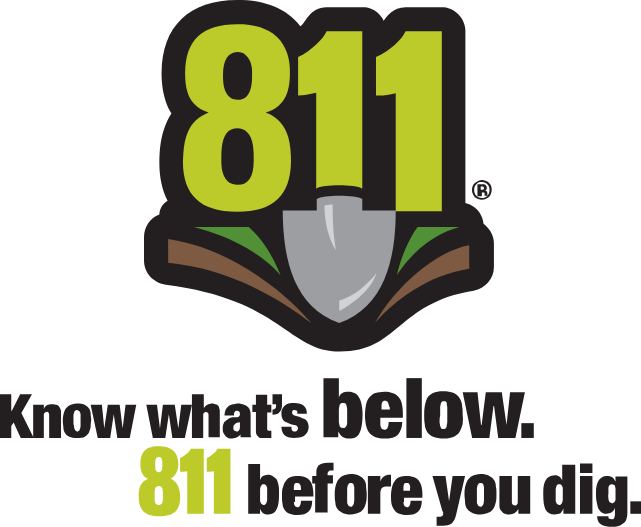Vegetation Management
Trees, vegetation, and power lines
Keeping the area around power lines clear is critical to maintaining a safe, reliable electric system. There are a variety of vegetation management programs and techniques designed to keep trees and limbs from coming in contact with power lines and prevent tree-related power outages.
Tree Trimming
Sometimes, trees and other vegetation can reduce our ability to deliver reliable service. A major causes of power outages are trees that fall into electrical lines, windblown branches that can contact lines as they fall to the ground, and tree limbs and shrubs that grow into power lines. Grant PUD is responsible for the trimming or removal of vegetation that may contact power lines in order to comply with local, regional, state, and federal laws for the safety of the public and to increase service reliability. Link to RCW. There are a variety of vegetation management programs and techniques designed to keep trees and limbs from coming in contact with power lines and prevent tree-related power outages.
Grant PUD’s Practices
- Maintain at least 12 feet of clearance between the lines and any vegetation.
- Trim or remove any trees that pose an imminent threat of interfering with power lines.
- Remove woody invasive species or other brush that may impede access for maintenance crews.
- Apply herbicides to minimize regrowth.
- Avoid constructing over power lines in your building plans.
Tree removal is especially important where pruning alone cannot achieve safe clearance from power lines. In some cases disease or insect infestation can result in irreversible decline, weakening trees so they are more likely to cause problems during storms and high winds.



Natural Pruning Methods
Where proper clearance can be achieved through trimming, natural pruning techniques or directional trimming will be used by tree trimming crews. Directional trimming concentrates on removing limbs and branches where the tree would normally shed them and direct future growth out and away from the electrical wires. While a newly-pruned tree might look different, natural pruning is designed to protect the health of the tree. It minimizes regrowth and reduces trimming costs.
Grant PUD prefers to minimize reoccurring tree trimming costs by removing nuisance trees. Contact Grant PUD if you prefer to have a nuisance tree removed rather than trimmed. Tree removal, pruning, and herbicide application will be performed by specially-trained contract crews working for Grant PUD. All work will be done at no cost to you and the crews will clean up the site when the work is completed. Grant PUD also provides additional guidelines for sound tree selection, placement, and management. For more information, For more information, call 509-766-2505.
Planting Tips
Avoid planting new trees directly beneath powerlines or too close to electrical equipment. Choose smaller-scale native or ornamental landscape trees and shrubs, with a compact growth form. Keep a clear zone of 20 feet from the pole or power line. Plant small trees (maximum mature height of less than 20 feet) at least 20 feet from pole or power lines. Plant medium trees (maximum mature height of 40 feet or more) at least 50 feet away.
Keep the area around pad mounted transformers clear for 10 feet from the front and at least 3 feet from the sides and back.


Tree Selection
The materials below from the WSU Extension office provide a variety of tips and suggestions to consider when choosing trees, shrubs, and other plants for your landscape.
- Small Trees for the Home Landscape
- Selecting Trees and Woody Shrubs for the Columbia Plateau
- Selecting Plants for Screens and Hedges
WSU's Grant County Extension Office
Call 811 before you dig
Whether you are planning to do it yourself or hire a professional, smart digging means calling 811 before each job.
Learn More

